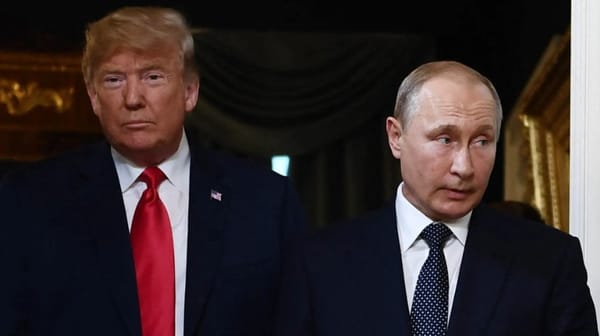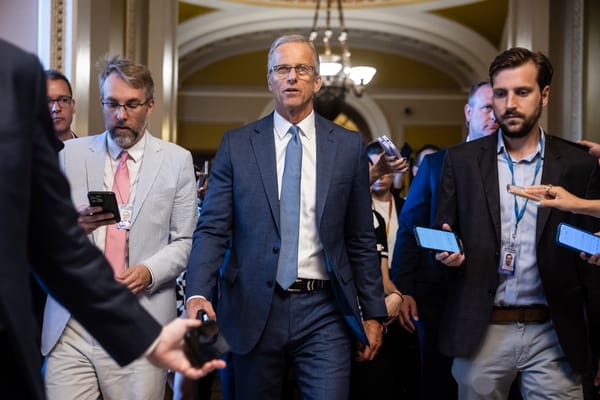Stock Markets Tumble Amid Trump–Powell Clash and Tech Export Restrictions

Introduction
U.S. stock markets experienced a sharp sell-off on Thursday, April 17, 2025, as a confluence of political and economic shocks rattled investor confidence. President Donald Trump’s public demand for the dismissal of Federal Reserve Chair Jerome Powell, combined with sweeping new restrictions on U.S. technology exports to China and a wave of disappointing corporate news, triggered a broad retreat across equities. The Dow Jones Industrial Average plunged by 700 points (1.7%), while the S&P 500 and Nasdaq suffered even steeper losses, erasing early gains and deepening a weeks-long period of extreme volatility. These events underscore the fragility of the current market environment, with companies and investors bracing for continued swings as policy uncertainty and global tensions mount[1][2][3].
I. The Trump–Powell Clash: Political Pressure Meets Economic Uncertainty
A. Trump’s Call for Powell’s Dismissal
The market’s opening losses accelerated after President Trump publicly called for the removal of Federal Reserve Chair Jerome Powell, criticizing him for not cutting interest rates quickly enough in the face of slowing growth and rising recession risks. Trump’s statements, delivered via social media and at a morning press conference, renewed concerns about the independence of the central bank and the direction of U.S. monetary policy.
- Market Impact: Investors interpreted Trump’s remarks as a sign of deepening discord at the highest levels of economic policy, raising fears that the Fed could be pressured into premature or politically motivated decisions.
- Fed’s Response: Powell, in a speech later that day, reiterated the central bank’s commitment to data-driven policy and cautioned that the scale of Trump’s tariff hikes is “significantly larger than anticipated,” likely fueling inflation and slowing growth. He signaled that the Fed would “await more clarity” before making any policy changes, disappointing those hoping for imminent rate cuts[1:1][2:1][3:1].
B. Investor Anxiety Over Fed Policy
The clash over interest rates comes as the Fed faces a challenging environment: persistent inflation, slowing economic growth, and heightened market volatility. Powell’s warning that tariffs could create a “challenging scenario” and potentially lead to stagflation—a toxic mix of rising prices and stagnating growth—deepened investor unease. Major banks, including JPMorgan, now expect the Fed to hold off on rate cuts until at least September[1:2][2:2][3:2].
II. Tech Export Restrictions and the Semiconductor Shock
A. New Export Curbs on AI Chips
Market volatility was further exacerbated by the Trump administration’s announcement of new restrictions on exports of advanced U.S. technology, particularly artificial intelligence (AI) chips, to China. The move is part of a broader effort to limit China’s access to cutting-edge semiconductor technology and address national security concerns.
- Nvidia’s $5.5 Billion Loss: Nvidia, the world’s leading AI chipmaker, revealed that the new export rules would result in a $5.5 billion hit to its first-quarter results, as its H20 processors—designed specifically for the Chinese market—were rendered unsellable overnight. The company’s shares plunged 7% on Wednesday, wiping out nearly $300 billion in market capitalization and dragging down the entire technology sector[1:3][2:3][3:3][4][5][6].
- AMD and Other Chipmakers: Advanced Micro Devices (AMD) also warned of an $800 million loss related to its MI308 GPU chip, which is now subject to similar restrictions. Shares of AMD, ASML (a Dutch chipmaking equipment giant), Broadcom, Micron, and Marvell all fell between 2% and 7% as the news reverberated through global markets[1:4][2:4][3:4][4:1][6:1].
B. Broader Impact on Tech Sector and Supply Chains
The new export controls have injected fresh uncertainty into the global semiconductor supply chain, which has already been battered by tariffs, trade wars, and shifting regulations. The restrictions not only threaten the revenues of U.S. chipmakers but also disrupt the business plans of companies worldwide that rely on American technology.
- AI Boom Hits a Wall: The AI chip market, which had seen explosive growth over the past two years, is now facing headwinds as regulatory risks and weaker demand in China weigh on sales and investment[4:2][5:1][6:2].
- Global Ramifications: ASML’s CEO noted that the unpredictability of U.S. trade policy is complicating planning and investment decisions for firms across the semiconductor ecosystem[4:3].
III. Broader Market Fallout and Corporate Losses
A. Index Performance and Sector Declines
The combined impact of political turmoil, Fed uncertainty, and tech export restrictions triggered a broad-based sell-off:
- Dow Jones Industrial Average: Fell by 700 points, or 1.7%, to close at 39,669[1:5][2:5][3:5].
- S&P 500: Dropped 2.2% to 5,275, after falling as much as 3.3% earlier in the day[1:6][2:6][3:6].
- Nasdaq Composite: Led the declines with a 3.1% drop to 16,307, reflecting the outsized impact on technology stocks[1:7][2:7][3:7].
B. UnitedHealth Group and Other Corporate Headlines
Market volatility was further fueled by a steep decline in UnitedHealth Group shares, which dragged down the broader healthcare sector. Despite reporting stronger-than-expected quarterly profits, United Airlines issued two distinct financial outlooks—one assuming a recession and the other not—highlighting the uncertainty facing corporate America as it navigates the unpredictable policy environment[2:8].
IV. The Role of Trade Policy and Tariff Uncertainty
A. Tariffs and Global Trade Tensions
The latest market turmoil comes on the heels of President Trump’s April 2 announcement of sweeping new tariffs, which have since been partially paused for some trade partners but remain in full force against China. The World Trade Organization (WTO) reported that its outlook for global trade has “sharply declined” due to the proliferation of new tariffs and the unpredictability of U.S. policy[5:2].
- Market Reaction: Since the introduction of these tariffs, the S&P 500 has fallen by approximately 8%, the Nasdaq by nearly 9%, and the Dow by 6.5%[1:8].
- Business Planning Disrupted: Companies across industries are struggling to adapt, with some issuing dual financial forecasts to account for the possibility of a recession triggered by trade policy[2:9].
B. Strategic Uncertainty for Corporations
The unpredictability of U.S. trade and monetary policy is forcing companies to prepare for both recession and non-recession scenarios. As one CEO put it, “This situation is fraught with uncertainty… It’s very difficult to reverse that”[2:10].
V. Investor Sentiment and the Path Forward
A. Flight to Safety and Market Volatility
The sell-off reflects a broader retreat from risk as investors seek safe-haven assets amid mounting economic and policy uncertainty. Treasury yields have fluctuated as traders reassess the outlook for growth, inflation, and Fed policy.
B. Outlook for the Coming Months
With the Trump administration signaling that new import restrictions on foreign semiconductors are imminent and the Fed holding off on rate cuts, investors are bracing for continued volatility. Many analysts warn that the combination of higher prices, weaker earnings, and policy unpredictability could keep markets under pressure for the foreseeable future.
Conclusion
Thursday’s market rout underscores the profound impact that political and economic policy shocks can have on investor confidence and corporate strategy. The Trump–Powell clash over interest rates, combined with aggressive new tech export restrictions and ongoing tariff uncertainty, has created a highly volatile environment for U.S. and global markets. As companies and investors prepare for both recession and non-recession scenarios, the coming months are likely to bring continued swings and heightened anxiety as the world waits for greater clarity on trade, monetary policy, and the broader economic outlook[1:9][2:11][3:8][4:4][5:3][6:3].
https://www.nbcnews.com/business/business-news/markets-sink-after-nvidia-5point5-billion-charge-comply-trump-rule-rcna201505 ↩︎ ↩︎ ↩︎ ↩︎ ↩︎ ↩︎ ↩︎ ↩︎ ↩︎ ↩︎
https://www.npr.org/2025/04/17/nx-s1-5367592/us-stocks-drop-nvidia-trump-tariffs ↩︎ ↩︎ ↩︎ ↩︎ ↩︎ ↩︎ ↩︎ ↩︎ ↩︎ ↩︎ ↩︎ ↩︎
https://www.businessinsider.com/stock-market-crash-today-jerome-powell-federal-reserve-nvidia-warnings-2025-4 ↩︎ ↩︎ ↩︎ ↩︎ ↩︎ ↩︎ ↩︎ ↩︎ ↩︎
https://www.reuters.com/technology/global-chip-stocks-slide-nvidia-warns-big-hit-us-export-curbs-2025-04-16/ ↩︎ ↩︎ ↩︎ ↩︎ ↩︎
https://www.cnn.com/2025/04/16/tech/nvidia-plunge-h20-chip-china-export-intl-hnk/index.html ↩︎ ↩︎ ↩︎ ↩︎
https://www.investopedia.com/nvidia-amd-and-other-chip-stocks-fall-as-trump-curbs-exports-to-china-11716186 ↩︎ ↩︎ ↩︎ ↩︎




